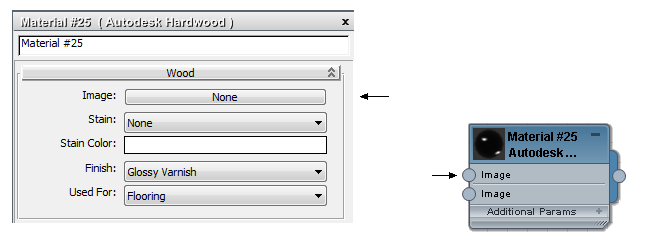Every material has a type. In general, you choose a material type based on what you are trying to model and how accurate (in terms of real-world, physical lighting) you want the model to be.
3ds Max provides a number of renderers. Each supports a particular set of materials, and has its own advantages. It is a good idea to design materials with a particular renderer in mind. The main choice is whether you want your rendering to be physically accurate.
An alternative when you use radiosity is to set up the scene with standard materials, but then apply physical characteristics to them with the Advanced Lighting Override material..
The iray renderer, like the mental ray renderer, assumes a physically accurate scene. The Quicksilver hardware renderer does not assume this, but the set of materials it supports is similar to the set supported by the mental ray and iray renderers.
A material's components describe its visual and optical properties. The components in the Architectural material are based on physical qualities; for example, diffuse color, shininess, transparency, and so on. The components in a Standard material include color components, highlight controls, self-illumination, and opacity. Like the Standard material, the Raytrace material uses a nonphysical model to describe surfaces. (Standard and Raytrace material components also vary depending on which shader you use.)
Material components correspond to “slots” in the Slate Material Editor’s display of material nodes.

The mappable Base Hardwood component (on the left) appears as a Base Hardwood slot in the material node (on the right).
Like the Architectural material, the components of mental ray materials always model physical properties.
You can assign maps to many components, including color components such as Diffuse, and value components such as Transparency or Opacity. Maps can increase the complexity and realism of the material's appearance.